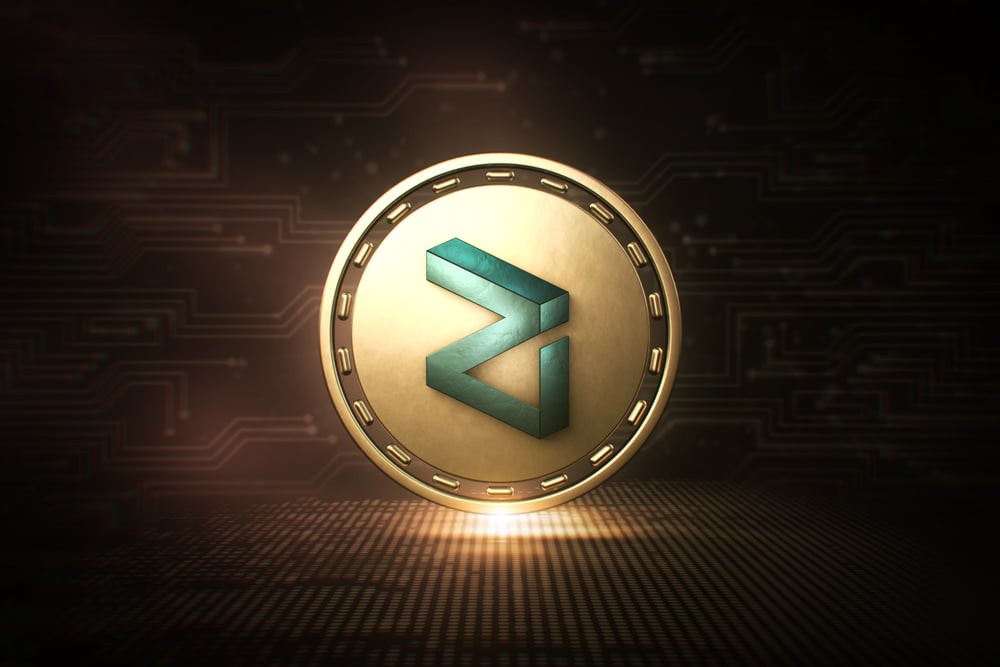Zilliqa (ZIL) Drops to a One-month Low
The launch of the metaverse did not help Ziliqa maintain high performance for a long time. Why does the coin lose value? What other altcoins are suffering serious losses? According to the most recent data from the data aggregator CoinMarketCap, the price of Zilliqa (ZIL) - the...

The launch of the metaverse did not help Ziliqa maintain high performance for a long time. Why does the coin lose value? What other altcoins are suffering serious losses?
According to the most recent data from the data aggregator CoinMarketCap, the price of Zilliqa (ZIL) – the token that underpins the blockchain of the same name, which is intended to compete with Visa and MasterCard – has dropped by 12 percent since the start of the new week. Zilliqa (ZIL) is a cryptocurrency that was created to compete with Visa and MasterCard. As of April 25, the cryptocurrency ZIL is trading at $0.09, which represents the cryptocurrency’s monthly low.
Zilliqa Price
Ziliqa’s price reached $0.22 in early April, thanks to the excitement around her own Metapolis metaverse. However, the uncertainty surrounding the release dates of the metaverse, as well as a lack of feedback from the team and a lack of updates, resulted in a precipitous drop in Zil quotes. All of ZIL’s accomplishments have been wiped out, and the coin itself appears to have been overbought. Zilliqa has plummeted to 70th place in the ranking of the world’s top cryptocurrencies, according to CoinMarketCap.
Others projects that have had a cost reduction of approximately 10% in 24 hours include NEAR, Polkadot (DOT), Harmony (ONE), Cosmos, and a number of others (ATOM). The Russian-Ukrainian NEAR project, which just received $350 million in funding from major investors, has been dubbed the “new Terra LUNA” because of its proximity to the Arctic Ocean.
Zilliqa is one of those cryptocurrencies that, if the developers are successful in bringing their vision to fruition, has the potential to usher in a true revolution in the world of blockchain technology. We’re talking about finding a solution to the problem of scalability, which is now a major issue for nearly any type of cryptocurrency.
The scalability of even the most advanced cryptocurrencies has yet to reach banking institutions such as Visa or Mastercard, despite the fact that this indication for recent coins greatly outperforms that of “long-liver” coins such as Bitcoin or Ethereum.
Zilliqa is another platform that competes with Ethereum, which is a platform that allows you to send peer-to-peer payments and develop decentralized apps. Developed by a team of scientists from the National University of Singapore, this coin was first made available in 2016. The subject of scalability, which the creators handled in an unconventional manner, was at the heart of the study and continuous experimentation.
In 2013, the Zilliqa cryptocurrency was launched on the Ethereum blockchain as an ERC-20 token, with a total of 21 billion ZIL being issued. However, following the launch of the Zilliqa main network, all tokens were transferred to the “native” blockchain, which is now the blockchain used by the Zilliqa main network.
The Zilliqa Initial Coin Offering (ICO) lasted only nine days, during which time the team was able to raise the $22 million hard cap that had been set. Participants were required to go through the Know Your Customer (KYC) procedure. The size of the minimum and maximum investments was also determined, with the minimum and maximum amounts being 2 ETH and 5 ETH, respectively.
The Zilliqa cryptocurrency was seen as a promising and innovative token by the community from the outset, as proven by its inclusion on the leading cryptocurrency exchange Huobi only 20 days after the conclusion of the initial coin offering (ICO) (see chart below). And users were not mistaken in their faith in the project, as the source code for the first test version of the Zilliqa v0.1 platform, known as Durian, was uploaded on GitHub in February 2018, a month after the conclusion of the crowdsale ended. A web wallet could be used to send transactions to and from the Zilliqa blockchain, and it could access the block explorer on the network.
Tokens of the Zilliqa
The Zilliqa token, which goes by the name ZIL, was first introduced on the Ethereum network in accordance with the ERC20 standard. Although all tokens were transferred to the new blockchain with the launch of the Zilliqa mainnet in 2019, this was not the case before.
Technology developed by Zilliqa
As previously stated, the primary goal of the Zilliqa development team is to increase the scalability of blockchain networks to unprecedented levels. In order to accomplish this, they implemented sharding technology, making them the first cryptocurrency to use this method as a foundation.
The goal of maintaining high scalability in a decentralized network is not straightforward to do. Nodes are necessary for the verification and confirmation of transactions, and the number of nodes required increases in direct proportion to the number of transactions. However, the following issue arises: when there are a high number of nodes, it becomes more difficult to establish consensus, resulting in more time being spent on the process.
The creators of Zilliqa were able to overcome these constraints by implementing sharding technology and creating their own consensus process from the ground up.
